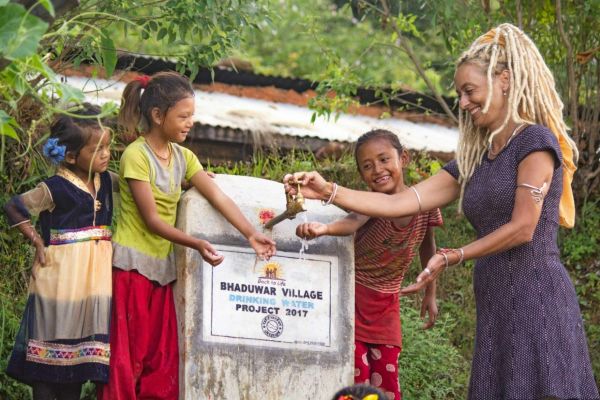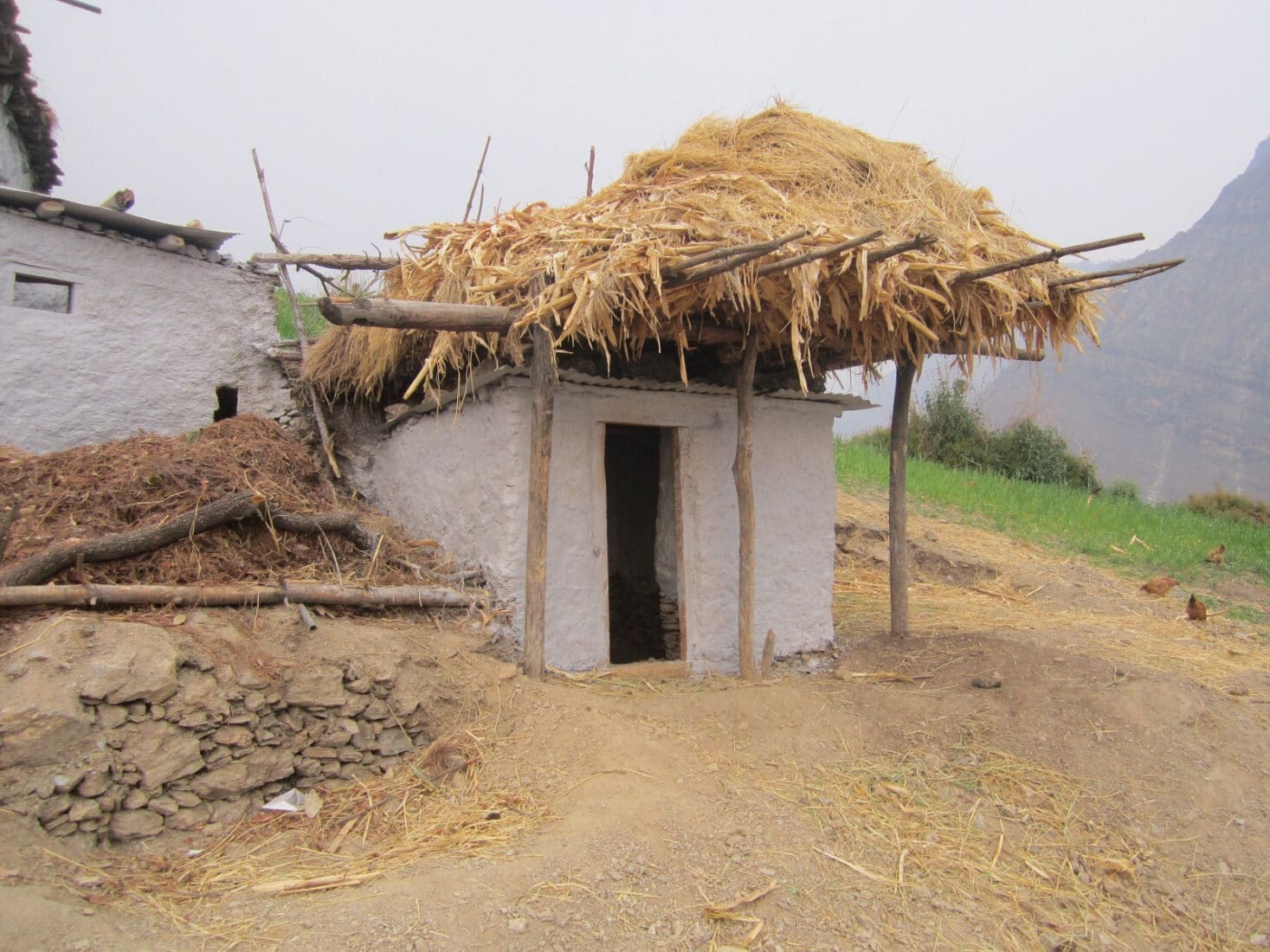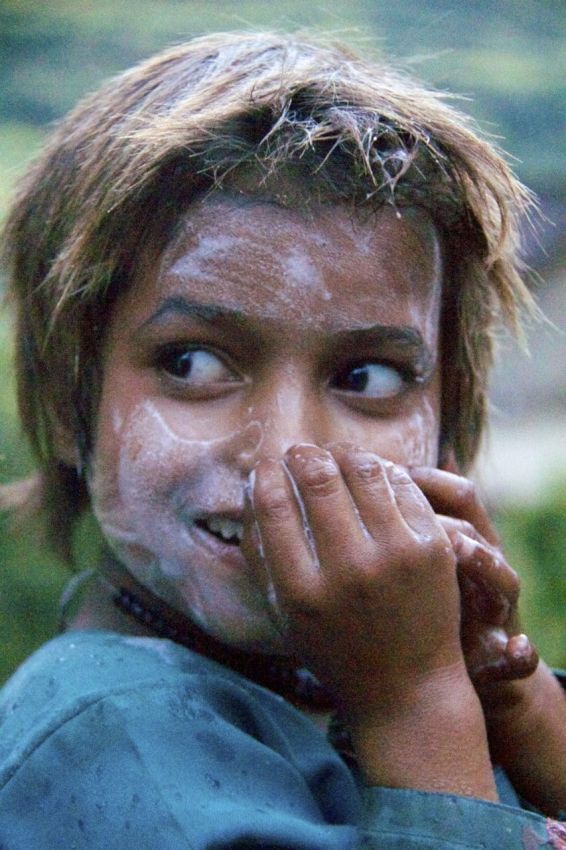Water, sanitation, hygiene – in short: WASH
What does water shortage mean?
Water is life and we need it to stay alive. Water is the key to everything. Its immediate accessibility is a prerequisite for the vitality of a village and the health of its inhabitants. Livestock, agriculture, hygiene – everything depends on access to water.

The water does not come from the tap,
but on foot
In the remote areas there is no running water in the households and also no supply of the villages by waterworks. People have to take the water they need from springs, rivers and water holes, and the quality of the water is often contaminated and harmful to health. When the rivers overflow their banks in the rainy season and become muddy and turbid, carrying sediment and garbage, the population regularly falls ill with diarrheal diseases and even cholera. Diseases transmitted through drinking water or lack of hygiene cause many preventable health and social impacts and even deaths.
Every Drop a Precious Good
No school without water
The girls’ school education also suffers. Many students show up late or not at all for class because it is their job to fetch water for the household early in the morning. Despite regular health programmes, some children are unwashed and wear soiled clothes. They suffer from fungus, worm infestation and skin diseases due to the lack of hygiene. Toilets are not used due to lack of water, and the faeces lying around are disease carriers. In some areas, an above-average number of pupils fall ill with diarrhoea, and the absenteeism rate in schools increases particularly during the monsoon months.
Water is Future
How do we create access to water?

For our drinking water projects, we select villages that do not have a functioning drinking water system and therefore rely on natural, unprotected springs and surface runoff. Many old water systems in rural areas are broken or insufficient for the population. This is where we come in.
Clean, Certified Drinking Water
For each village, we look for the optimal sustainable water access that runs without electricity and is easy to maintain so that it can function permanently. First, we have the water quality of the possible water sources tested in certified laboratories. The civil engineer then prepares a construction plan with the water supply engineers, according to the official guidelines of the “Development Committee for Rural Water Supply and Sanitation Fund of Nepal”. We submit the construction and cost plan and the authorities issue the building permit.
Electricity- and Trouble-Free Water Supply
A drinking water system typically consists of a protected inlet, water pipes, a storage tank, a filter system as well as several water taps. We work with gravity and mechanical water filtration – so there is no need for a pump or special technology that could break down and make the water system susceptible to malfunctions. Our goal is to ensure that the beneficiary community has sufficient clean water year-round and that every family in the village can quickly reach a tap.
The Village’s Own Initiative
As with all Back to Life construction projects, we require the villagers to take the initiative. Each household sends one family member to the construction site. The village community is all the more proud of the completed work and will maintain it in better condition. The water quality is tested again by certified laboratories and approved by the health authority.

Choose an amount:
The Future in Your Own Hands
The “Water User Group” chosen by the village and trained by us is responsible for maintaining the system. We equip them with the appropriate tools. In addition, the savings groups we have set up will ensure that the operating costs of the water supply can be borne by the village itself in future. This is important in order not to create any dependencies. Our team checks the maintenance work at regular intervals.
Why are sanitary facilities so important?
A clean and functioning toilet within reach is part of everyday life for us.
But in our project areas in Nepal, going to the toilet is not a matter of course for the people.
The prevailing poverty means that people there cannot afford their own toilets and have to defecate on their doorsteps, in the fields and along the paths.
Many women suffer unnecessary health problems because they can only relieve themselves in the dark, out of shame of being seen doing so.
Clean water and sanitation is a human right, officially recognized as such by the UN General Assembly in 2010.
But according to UNICEF, nearly 11 million people in Nepal do not have access to adequate sanitation.
That’s a third of the total population.
The lack of sanitation facilities for the disposal of human faeces is one of the main causes of water contamination and carries dangerous health consequences such as intestinal worm infestation, cholera, typhoid and diarrhoea.

How we save lives through improved hygiene
Adequate sanitation is above all a question of resources, because the materials needed to build a suitable toilet require money and the construction requires basic technical know-how. Therefore Back to Life supports needy villages in building toilets. The internationally standardized model “Ventilated-Improved-Pit-Latrine” or VIP toilet in short is usually used. This is an improved, yet simple to build and cost effective dry toilet that safely isolates excrement, controls fly infestation and prevents unpleasant odours by circulating air.
Our health expert Prof. Dr. Madhav Bhatta (Epidemiologist) emphasizes, “By building toilets and educating people about hygiene, we will save many lives.”






















Pupil toilets increase school attendance
Hygienic, functioning toilets are also indispensable at schools.
Back to Life supports the construction of gender-segregated student toilets and equips them with running water and sinks for hand washing.
It is important for us to ensure that the number of toilets is adequate for the number of pupils and that girls can practice their menstrual hygiene comfortably.
More hygiene for a better life
Many people are not even aware of the connection between hygiene and diseases. It needs education. This is where our work in the field of hygiene comes in. In a variety of age-appropriate and culturally appropriate formats, we educate people about essential hygiene practices and help them form a habit from their newfound knowledge. Our core message is, “Regular handwashing with soap can help keep kids healthy and in school, fight malnutrition, and may even save lives.” (globalhandwashing.org)
What have we achieved so far?
Water Ponts with 2 taps each
People have access to water
Micro hydroelectric power station
Students participated in Corona Prevention & WASH
Toilets
School toilet facilities
Access to Clean Drinking Water
- is active health care for young and old and prevents many diseases.
- vimproves the hygiene of the whole village in all areas.
- is also “women empowerment” because of the enormous daily time and energy savings and protects women from further damage to their health.
- gives the opportunity to grow vegetables and keep animals.
Diarrhoea is still the most common cause of death in the mountains of Nepal. That’s easy to combat – by using clean water. The Corona pandemic demonstrates all the more clearly the importance of access to hygiene. Please help us with this!
Would you like to help and become a project sponsor?
Through project sponsorships, you can support the important WASH programmes and access to clean water. In doing so, you give the gift of life.













